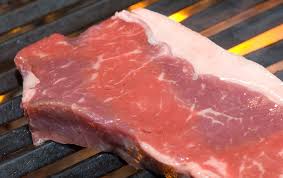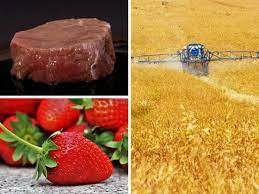The problem of satisfying the dietary requirements of a growing world population is becoming increasingly acute.
Drugs that improve the rate of weight gain, improve feed efficiency, or prevent and treat diseases in food-producing animals are critically needed to meet the challenge of providing adequate amounts of food for that population.
However, the benefit of improved production from the use of animal drugs in food producing species is not without risk.
The use of these vaccines has been implicated for leaving harmful residues in animal meats and other products. In addition, as discuss previously, the use of pesticides to enhance crop quality and yield is also prone to the attendant risk of leaving pesticide residues in the plant products.
The plant materials when fed to animal have the tendency to in turn deposit these residues in the animal body. The concentration of the residues tend to increase as they are transferred from plant materials to the animal body in a process known as biomagnification or bioamplification.
It is therefore necessary to collect data on residues and their safety as a basis for establishing safe residue concentrations and withdrawal periods for food animal drugs. Moreover, it is equally important that slaughtered animals be monitored for possible unsafe residues.
Sources of Pesticide Residue Contamination of Meat and Dairy Products
Animal products intended for food may become contaminated with pesticide chemicals in a number of ways.
Residues of pesticides sprayed during the early stage of growth are retain even till harvest in fodder maize. Concentrates are important sources of pesticide residue intake by animals.
REad Also : Factors Influencing Pesticide Degradation in Soils
Apart from pesticides used for crop production, their indiscriminate usage during storage also play a role in the case of oil cakes, grains and milling products.

Contamination of the soil and water sources used for drinking purpose of animals also forms another source of pesticide residue in animals.
Direct contact of the animals with pesticides during control of external parasites on animals and insects and fly control in cattle yards and sheep sheds also form other source of pesticide residues in animal body.
The monitoring studies conducted at AICRP on Pesticide Residues, Hyderabad indicated the contamination of animal products, feed and fodder samples collected from different parts of the state.
DDT and other chlorinated materials are used to control insects on such forage crops as alfalfa, clover, and grass and on peas, beans, corn, and similar crops, of which a part is used as animal feed.
Some pest killers, used at recommended dosages and in accordance with good agricultural practices, leave enough residue on forage crops so that some is stored in the animal or excreted in milk if the forage is fed to livestock.
Pastures or grain that have had pesticide treatments also may be a source of contamination of animal products.
DDT – the common name for the commercial product dichloro-diphenyltrichloroethane has been found in milk samples from cows stabled in barns sprayed with it, even though the cows were outside when the spraying was done.
Enough DDT was picked up from feed troughs, water fountains, and other sources to cause excretion in the milk. Some other pesticides, sprayed directly on the animals, have been excreted in the milk.
Some of the pesticides used in spraying and dipping cattle, sheep, goats, and swine are stored in the animals’ bodies. Some materials have caused serious disturbances and even fatalities. Others have little apparent effect.
Most of the pesticides used for insect control are soluble in the fat and are stored in the fatty tissues of the animal. Three to four months may be required before some of the chemicals are eliminated.
In conclusion, the presence of pesticide residues in feed and animal products is in the focus at the present in the view of WTO. The residues not only affect the public health but also cause economic losses to the livestock industry.
These not only affect the health of livestock and human beings but also affect the quality of animal products. Pesticide residues accumulate in the animals either by direct contact with pesticide or by indirect contact with environment.
Pesticides are used in crops for pest control and they leave the residues in the feed and fodder consumed by animals. The source of contamination of feed and fodder may be by direct spraying or by drift from other crops, contamination of soil and water used for fodder production.
Pesticide use regulations should therefore be emphasized and embraced in order to maintain the minimum residue limits (MRL) in all countries.
The different ways by which pesticide residues reduces the quality and economic value of livestock products; the various was by which pesticide residues gain entry into animal products; and the various ways residues can be managed to keep pesticide residues in the minimum residues limits.

